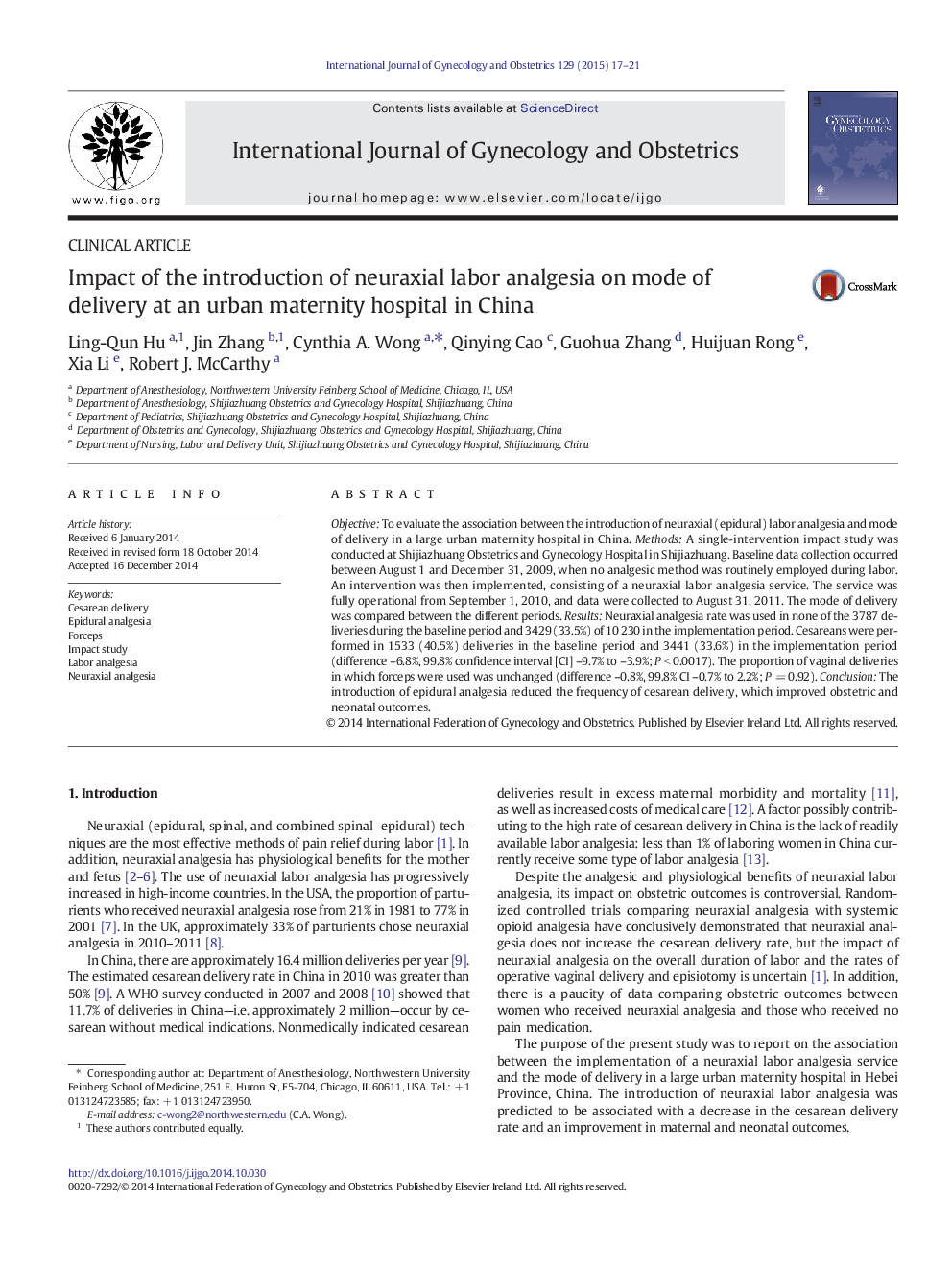| Article ID | Journal | Published Year | Pages | File Type |
|---|---|---|---|---|
| 3951767 | International Journal of Gynecology & Obstetrics | 2015 | 5 Pages |
ObjectiveTo evaluate the association between the introduction of neuraxial (epidural) labor analgesia and mode of delivery in a large urban maternity hospital in China.MethodsA single-intervention impact study was conducted at Shijiazhuang Obstetrics and Gynecology Hospital in Shijiazhuang. Baseline data collection occurred between August 1 and December 31, 2009, when no analgesic method was routinely employed during labor. An intervention was then implemented, consisting of a neuraxial labor analgesia service. The service was fully operational from September 1, 2010, and data were collected to August 31, 2011. The mode of delivery was compared between the different periods.ResultsNeuraxial analgesia rate was used in none of the 3787 deliveries during the baseline period and 3429 (33.5%) of 10 230 in the implementation period. Cesareans were performed in 1533 (40.5%) deliveries in the baseline period and 3441 (33.6%) in the implementation period (difference –6.8%, 99.8% confidence interval [CI] –9.7% to –3.9%; P < 0.0017). The proportion of vaginal deliveries in which forceps were used was unchanged (difference –0.8%, 99.8% CI –0.7% to 2.2%; P = 0.92).ConclusionThe introduction of epidural analgesia reduced the frequency of cesarean delivery, which improved obstetric and neonatal outcomes.
